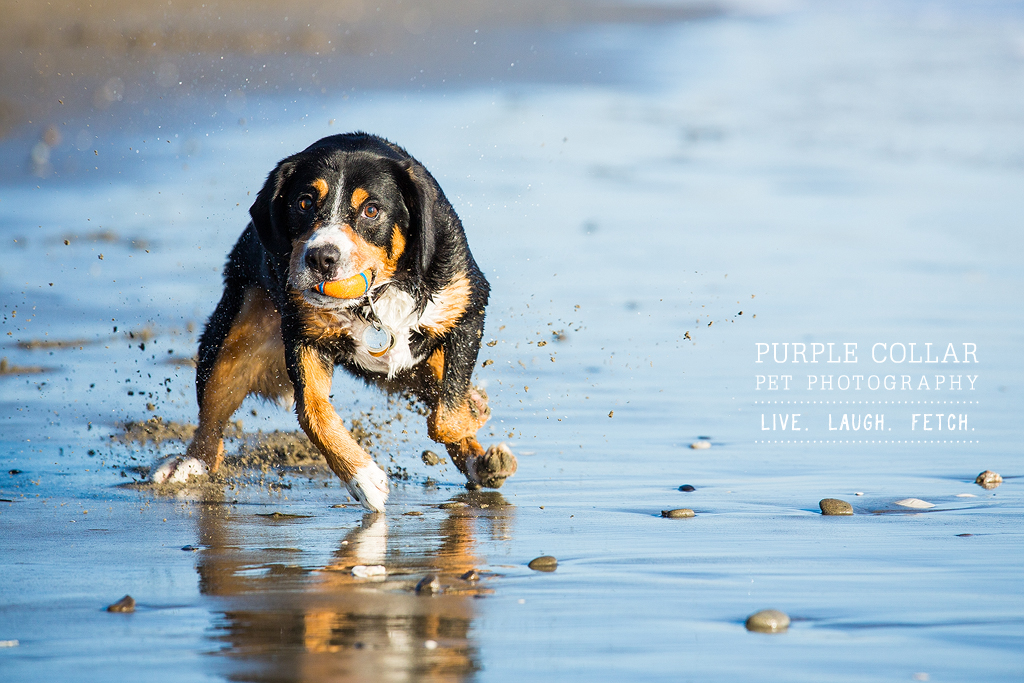
Every pet photographer has likely experienced the feeling of controlled chaos that sometimes comes along with photographing animals. When you bring an excited dog into a new place with new people and then proceed to throw some toys, some running, and some treats into the mix, sometimes you have to just roll with the inevitable exuberance that follows. And why have it any other way? After all, boundless energy is often a large part of what makes our companions who they are. Capturing that energy, whether it’s expressed as a running dog or a boxing cat, can be a great way to convey an animal’s character and give your images a dynamic feel.
Shooting action is not without its challenges, however, and can require an investment in learning new techniques and acquiring specialized gear. Fortunately for us, the learning curve is short and the payoff rewarding. Below are some of my (somewhat rambling) thoughts on the subject of getting started with action photography:
It’s All About the Settings
There are several important camera setting adjustments required for capturing fast-moving action: focusing mode, drive mode, focus point selection, and shutter speed.
The two largest SLR manufacturers by market share, Canon and Nikon, both offer continuous focusing modes on their camera bodies. On Canon cameras, the mode is called “AI Servo”; on Nikon cameras the mode is called “AF-C”. Since I work with Canon equipment I’ll stick to Canon terminology for simplicity’s sake, but both systems offer the same functionality.
AI Servo differs from the other main focusing mode, “One Shot” (or “AF-S” for Nikon), in that, in AI Servo mode, the camera’s focusing system constantly works to maintain focus. In One Shot mode, the AF system will no longer attempt to focus once focus lock has been achieved. This makes One Shot a very poor focusing mode for action. For example, if you were to use One Shot to attempt to photograph a dog running straight at you, your fast-moving subject will have already moved through the focus plane by the time the AF system achieves focus and you release the shutter. In AI Servo mode, however, the AF system will never lock, but will continuously work to keep in focus the portion of the image that is covered by the active focus point.
At the same time, you’ll also want to make sure that the drive mode — the setting which controls shutter release frequency — on your camera is set to continuous. If your camera’s drive mode is set to single, the shutter will only release once per button depress! In continuous drive mode, the shutter will release continuously for as long as the shutter button is depressed (until you fill your camera’s write buffer). It’s important to have as many shots as possible when capturing fast-moving action, since not every shot will be a keeper (as seen below).
Focus point selection is another important component to capturing action. Since I (and many other pet photographers) use a style of photography referred to as “selective focus”, where a very specific portion of the image is in the focal plane, I prefer not to let the camera body’s focusing system try to automatically determine which portion of the image should be in focus for me. Instead I use a single focus point, which I can quickly change as needed. I carry this style of focus point selection over to my action shots. I simply choose the focus point myself and make sure that the portion of the image I want to keep in focus falls — and stays — under the chosen focus point, allowing the AF system to work while I snap away.
The last camera setting of major importance to capturing fast-moving action is shutter speed. If you want to completely freeze action you’ll have to use a very fast shutter speed. Depending on lighting conditions and how quickly my subject is moving, I typically like to shoot with a shutter speed of somewhere between 1/1000 and 1/2000 to achieve this effect. Anything faster than 1/2000 is typically unnecessary and will only make me adjust for the lower exposure by raising ISO, thereby degrading image quality. You can lower shutter speed to below 1/1000 if you’d like to give some fast-moving portions of the image, like paws, a slight motion blur, but you may end up with motion blur in other parts of the image as well. As always when changing any setting that will affect exposure, I make sure to adjust other exposure settings — ISO and aperture — accordingly.
Before I move on, I also wanted to touch on the subject of aperture and depth of field. If you’re having trouble keeping your subject in focus you can always stop down the aperture of your lens and give yourself a wider focal plane. At larger apertures, even the best equipment can sometimes struggle to maintain focus on fast moving subjects.
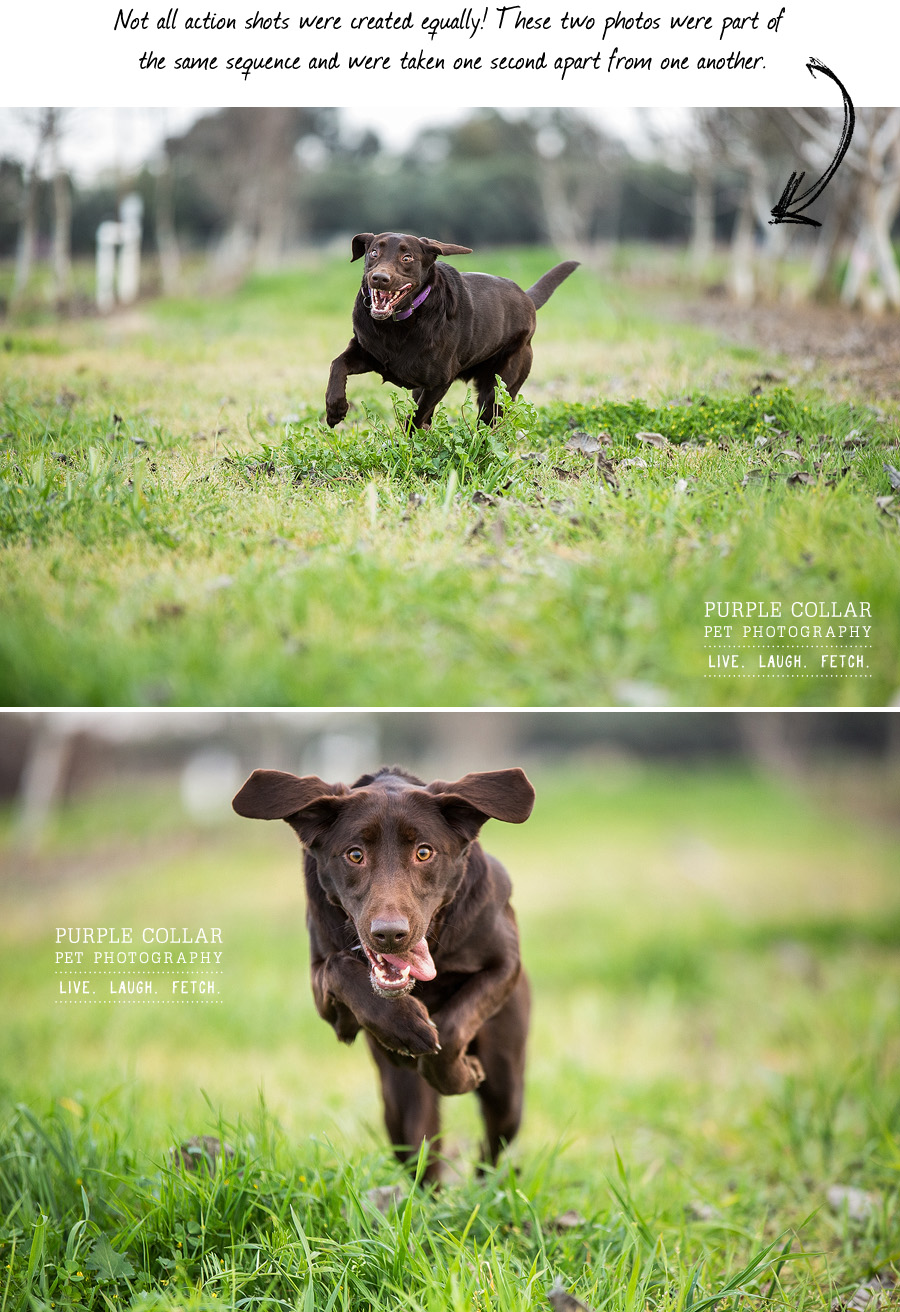
Positioning: Subtle Differences Add Up
Great! So we’ve got our settings down and we’re freezing action like pros. How else can we differentiate our shots? Positioning! Oftentimes for me positioning is a balancing act in which I try to maintain optimal lighting, compositional, and background conditions that result in well-lit photos and yet contain no unwanted distracting background elements.
Unless I’m going for a specific shot that dictates otherwise, I always like to get down on the same level as my subject. The same is true for action shots. Usually I’ll either be lying flat on my stomach or hunkered down as low as I can go in a squatting position. Photos taken from this angle typically create a better connection with the subject than photos taken from standing level.
At the same time I’m also of course paying attention to the background and trying to keep it as uncluttered as possible. Having a lens with a long focal length, which can compress the background, and a wide maximum aperture, which can reduce the depth of field, is very helpful in reducing any unavoidable distractions.
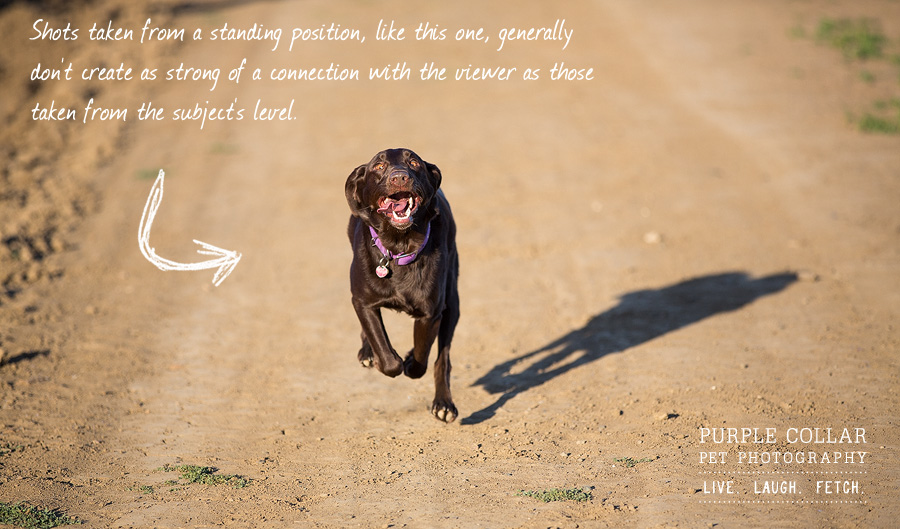
Getting a Leg Up with Equipment
As is often the case in photography, equipment — from the camera itself to memory cards — does play a role in one’s ability to effectively capture action on a consistent basis. That’s not to say that the best, most specialized gear is required — much can often be done with quite little — but there are key specifications to watch out for in equipment that will make your life easier when trying to photograph, for instance, a 100+ lb. Saint Bernard running full speed right at you.
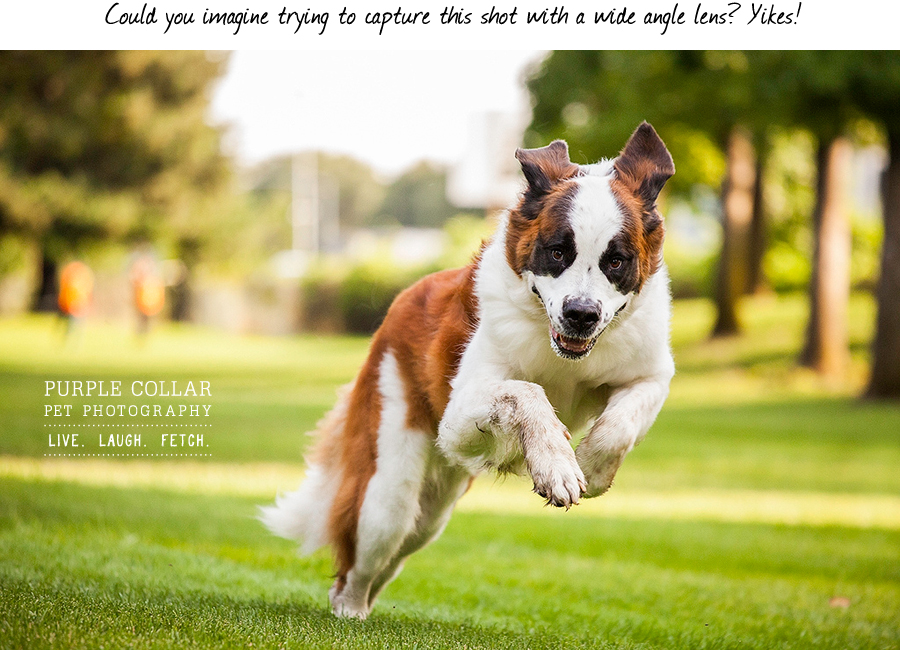
Camera: There are three components to a camera that can make it a more effective tool for capturing action: the number of focus points and their accuracy, the amount of frames the camera can capture per second (FPS), and the number of images the camera can write (or buffer) to the memory card at a time.
- Focus points: Auto focus, specifically continuous auto focus, is a fantastic tool for capturing fast-moving action. Rather than pre-focusing on a specific point in space and timing the shutter release — thus being held helpless to capture whatever your subject is doing at that moment — you can simply focus on your subject as it moves and snap all along the way. To achieve this goal, however, we are completely reliant on the efficacy — for not all focus points are created equally — and placement of our cameras’ auto focus points. Cross-type focus points, or dual cross-type points, offer much improved focus tracking (due to their greater sensitivity) over simpler vertical line focus points and are highly desirable for action. Furthermore, a focus system that has cross-type focus points spread across the viewfinder will offer you greater flexibility when composing a shot, rather than having to rely on a center point and recomposing in post. Note that some focus points will only act as cross-type or dual cross-type points when using certain lenses with maximum apertures equal to or less than a specific f-number, typically 2.8 or 4.0. The focus points that act in this manner will vary by camera.
- Frames per Second (FPS): The best moments in action photos are fleeting, and having a camera body that can capture a higher number of frames per second gives you a better opportunity to catch that perfect shot on the first or second try, rather than the third, fourth, or even fifth.
- Write Speed/Buffer Size: All the FPS in the world would be useless without the ability to quickly write image files to your memory card. And even then, the camera’s write speed is only half the equation: make sure your memory cards are capable of being written to quickly as well.
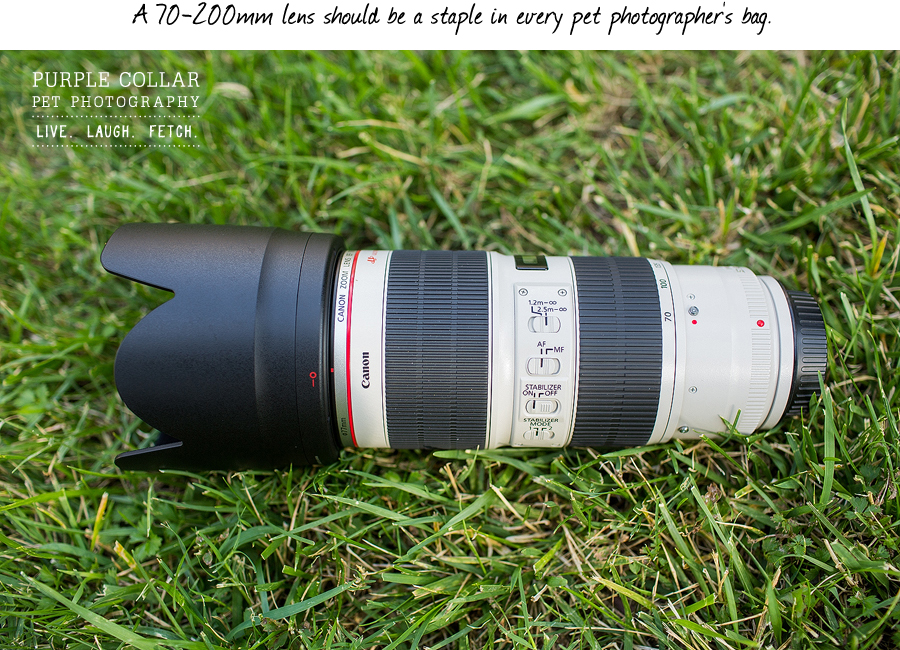
Lens:Â In order for a lens to be a more effective tool for capturing action it should have a: 1) long focal length; 2) quick and accurate focusing motor; and 3) while not required, a wide aperture is a nice bonus.
- Long focal length: A long focal length (generally 70mm and up) on a lens is useful for capturing action for several reasons: it allows the subject to move around unimpeded by your presence, allowing he or she to act more naturally while keeping you both safe from injury. At the same time, a long focal length also helps to compress the image background, helping to isolate your subject and assist in blurring out any unwanted distractions.
- Fast and accurate focusing: Lenses with fast and accurate focusing mechanisms — on Canon these are denoted as “USM” (or Ultrasonic) lenses — are one of the most important components of a pet photography equipment stable in general, but they are especially valuable when shooting any fast-paced action.
- Wide Aperture (bonus!): A wide aperture will not only assist in subject isolation, but will also allow more light into the lens, thereby allowing you to keep shutter speeds higher before having to increase exposure by raising ISO.
Again, equipment meeting the above specifications isn’t required for capturing action, but it will certainly help you achieve consistent results. I’m consistently amazed by the ingenuity and talent of photographers all over the world who do more with less, and those working in action photography are no exception.
If you’re unfamiliar with shooting action or have found yourself frustrated by out-of-focus or motion-blurred photos, it’s my hope that my rambling here has at least somewhat helped you! Action shots are a great way to capture a different side of your dog or cat, and I’ve often found that the photos, like our companions themselves, while sometimes goofy, are almost always joyful.
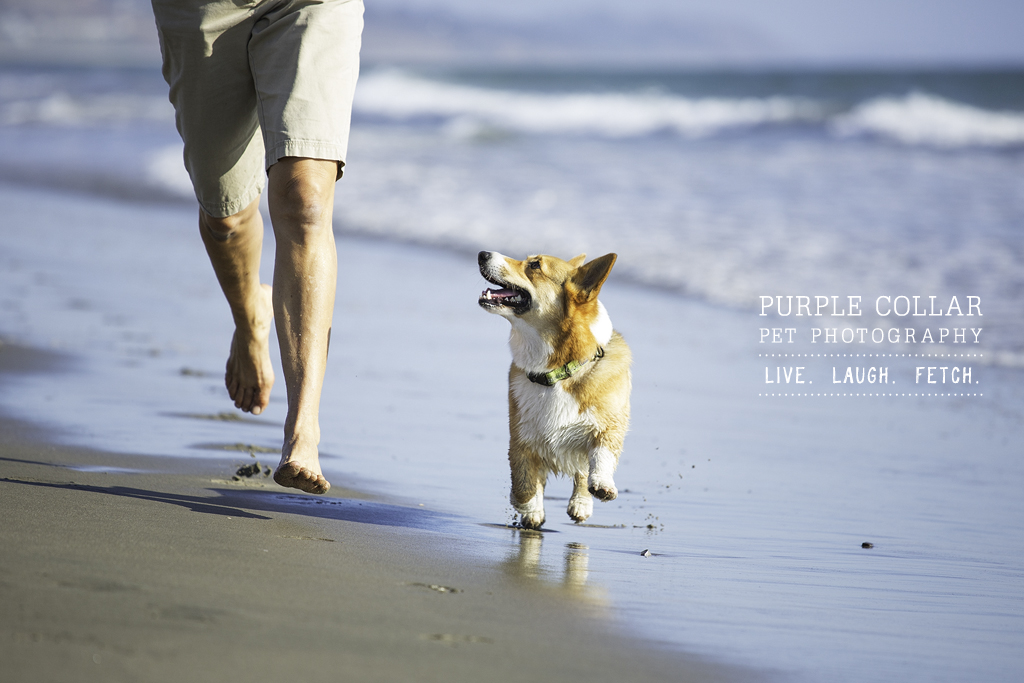

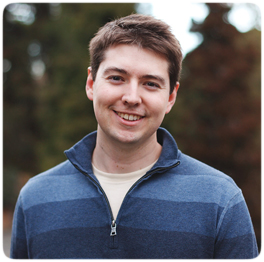

10 comments